- Residents claim they are the 'forgotten victims' of Sandy
- Also say that lack of power and law enforcement means more looting and violent crime
- Those in stricken areas stockpiling weapons like kitchen knives, machetes, and bats to protect themselves
- Coney Island residents say they are forced to 'scavenge for food like animals'
- Power unlikely to be returned to Brooklyn, Queen's and Staten Island until sometime next week
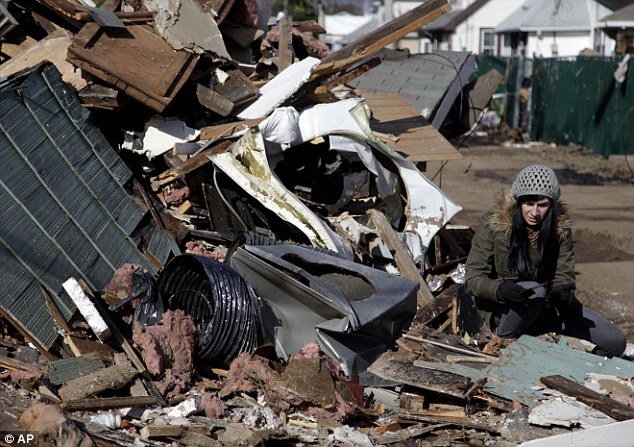
With little police presence on the storm-ravaged streets, many residents of the peninsula have been forced to take their protection into their own hands, arming themselves with guns, baseball bats and even bows and arrows to ward off thugs seeking to loot their homes.
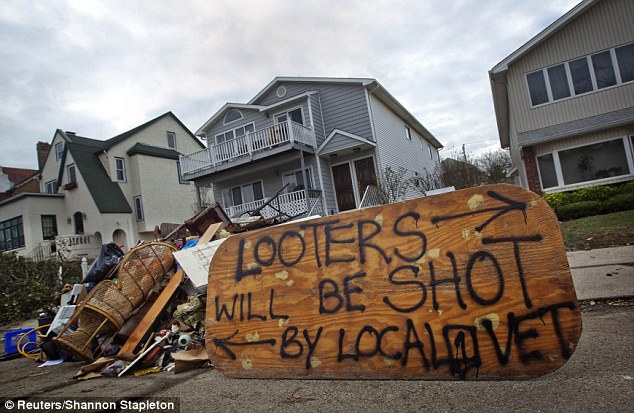
'We booby-trapped our door and keep a baseball bat beside our bed,' Danielle Harris, 34, told the New York Daily News.
The woman added that she has been hearing gunshots likely fired in the nearby housing project for three nights in a row.
Meanwhile, local surfer Keone Singlehurst said that he stockpiled knives, a machete and a bow and arrow.
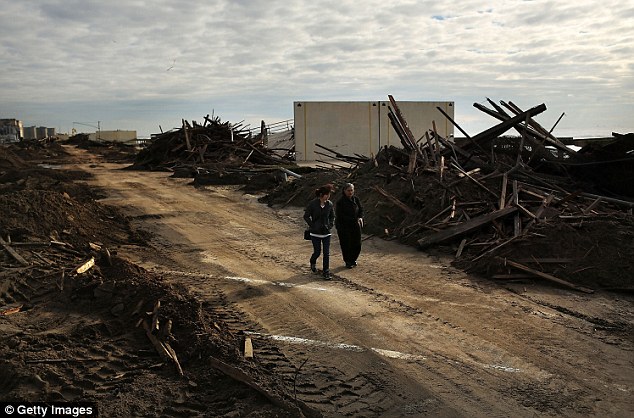
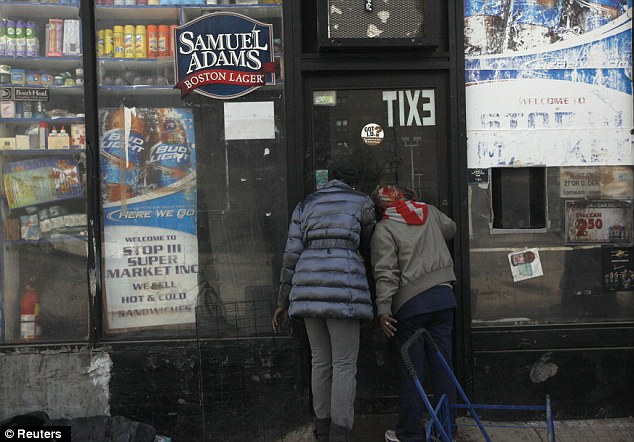
City Councilman James Sanders said he fears that things are going to get even worse.
'We have an explosive mix here,' he said. 'People will take matters into their own hands.'
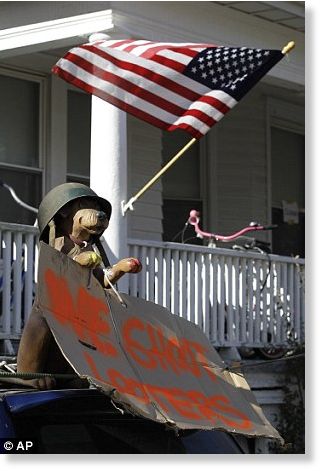
'LIPA has failed the people of the Rockaways,' he said. 'It's a question of class... serving the richer areas of Long Island and ignoring the Rockaways.'
Walter Meyer, 37, told the Daily News that the Rockaways of today bears little resemblance to the peaceful place where he has surfed so many times in the past.
'After sunset everyone locks their doors,' he said. 'They're trying to find whatever weapons they can find. Some people are even using bows and arrows.'
Along with mounting safety concerns, homeowners in the beachfront community hit hard by Hurricane Sandy that has left 109 dead continued to face hunger, complaining that federal officials have left them to fend for themselves.
'Rockaways always get left over,' said Meyer. 'It's treated like a marginalized land in the city.'
Most of the grocery stores in the area have not reopened since the storm, and the neighborhood has been left cut off from the rest of the city, with no trains or even shuttle buses servicing the residents.
Stranded neighbors largely have been relying on volunteers delivering food, water and other basic necessities while the Red Cross and FEMA were still nowhere in sight.
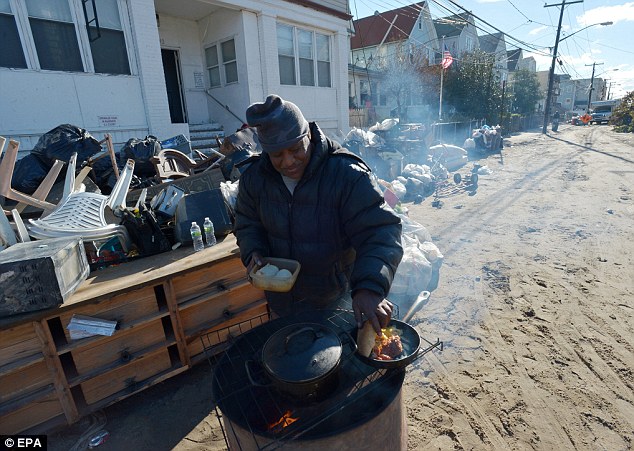
As they scrape round desperately for food and are forced to use their gas hobs to keep warm, many claim they are the forgotten victims of Sandy.
The Borough President of Staten Island called the reaction of Red Cross - or lack thereof - to the devastation caused by Sandy an 'absolute disgrace'.
James Molinaro went as far as to tell people not to donate to the charity because when push came to shove, the group just didn't deliver when Staten Island needed them the most.
'My advice to the people of Staten Island is do not donate to the American Red Cross,' said Mr Molinaro. 'Let them get their money elsewhere.'
'It's an absolute disgrace in a county that has always responded to disasters all over the world,' he said.
'Katrina - we sent them down four trailer loads of food, water and one trailer load of generators. No one's responding to us.'
Residents are pleading for help as they fear their devastated neighborhoods are being ignored.
In a Coney Island apartment block, where tenants huddle together in one room and human waste spills out of the toilet, tenant Jeffery Francis despairs that help is not getting to Brooklyn faster.
We are scavenging for food like animals,' he told the New York Daily News. 'We are in a crisis and no one will help us. Look at us. We are misery. Everyone cares about Manhattan. No one is looking out for us. Nothing.'
At another apartment where power is still out, residents are out of food and praying for help. Albert Miller, 58, told the paper: 'One person found a sandwich and we split it four ways.'
While power is likely to be returned to Manhattan's East and West Villages, Financial District, Chelsea, Chinatown and the Lower East Side by the weekend, according to the power company Con Edison outages in Brooklyn, Queens and Staten Island are not expected to be repaired for another week.
Across Staten Island residents are also increasingly frustrated they are being passed over while other parts of New York and New Jersey receive aid and attention.
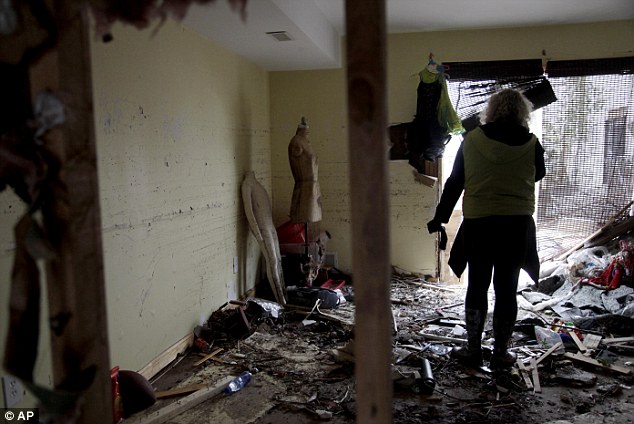
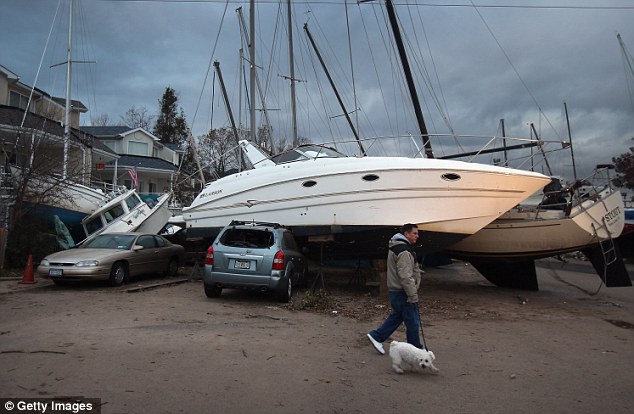
Natvel Pritchard, of Staten Island, told CBS News, 'Though people don't talk about Staten Island much, people are here, a lot of people are hurting, so it's upsetting.'
One gated community at the tip of the island, Seagate, was particularly badly hit, with some houses entirely washed away or flattened.
For power companies, the scale of the destruction was unmatched - more widespread than any blizzard or ice storm and worse than the aftermath of Hurricane Katrina.
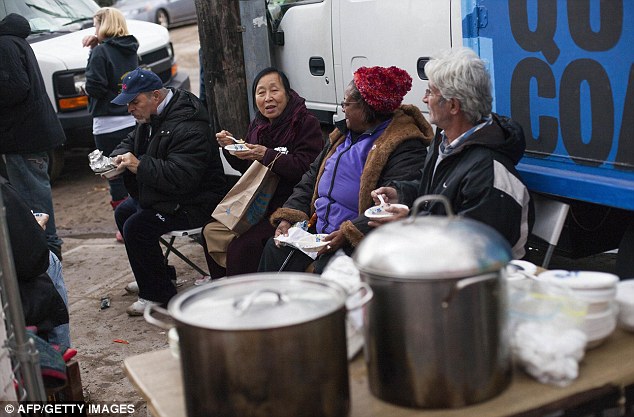
Initially, about 60 million people were without power in 8.2 million homes and businesses.
By Wednesday night, that number had fallen to roughly 44 million people in 6 million households and businesses and today around 3.6 million are without power
The Borough President of Staten Island called the reaction of Red Cross - or lack thereof - to the devastation caused by Sandy an 'absolute disgrace'.
James Molinaro went as far as to tell people not to donate to the charity because when push came to shove, the group just didn't deliver when Staten Island needed them the most.
'My advice to the people of Staten Island is do not donate to the American Red Cross,' said Mr Molinaro. 'Let them get their money elsewhere.'
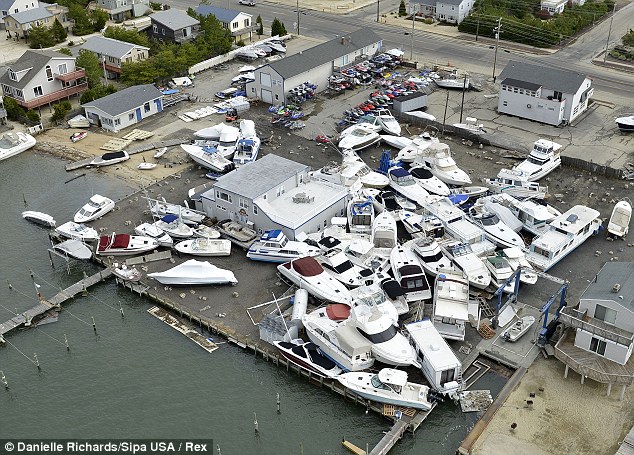
'Katrina - we sent them down four trailer loads of food, water and one trailer load of generators. No one's responding to us.'
'Of the 22 people across New York City that have perished, 15 of them died in Staten Island. The borough is still underwater.'
Residents are pleading for help as they fear their devastated neighbourhoods are being ignored.
In a Coney Island apartment block, where tenants huddle together in one room and human waste spills out of the toilet, tenant Jeffery Francis despairs that help is not getting to Brooklyn faster.
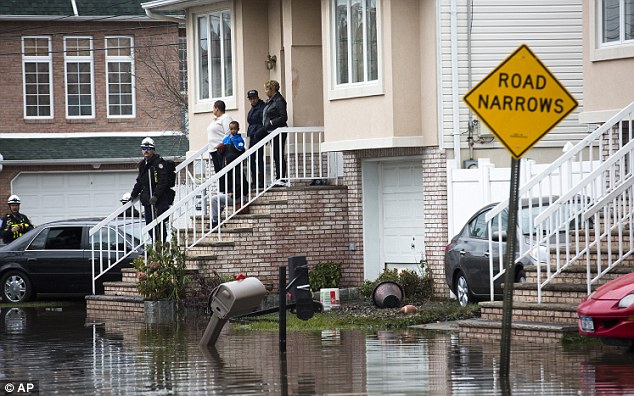
At another apartment where power is still out, residents are out of food and praying for help. Albert Miller, 58, told the paper: 'One person found a sandwich and we split it four ways.'
While power is likely to be returned to Manhattan's East and West Villages, Financial District, Chelsea, Chinatown and the Lower East Side by the weekend, according to the power company Con Edison outages in Brooklyn, Queens and Staten Island are not expected to be repaired for another week.
Across Staten Island residents are also increasingly frustrated they are being passed over while other parts of New York and New Jersey receive aid and attention.
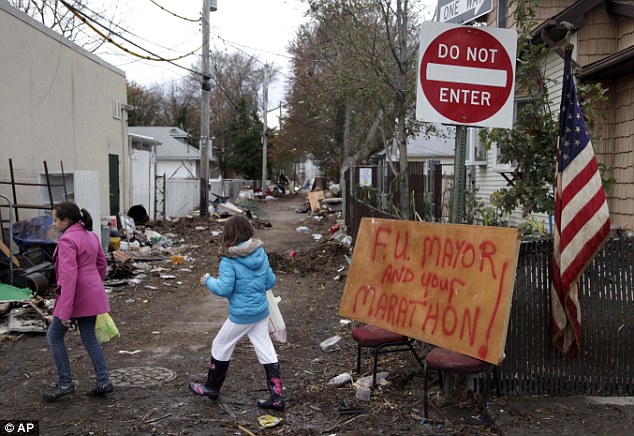
One resident there told CBS station WCBS, 'We're gonna die! We're gonna freeze! We've got 90-year-old people!'
Natvel Pritchard, of Staten Island, told CBS News, 'Though people don't talk about Staten Island much, people are here, a lot of people are hurting, so it's upsetting.'
Homes across Brooklyn and Coney Island are some of the worst hit in the wake of the superstorm.
Many houses shattered into piles of bricks and splintered planks at Coney Island, while others stand waterlogged and abandoned.
One gated community at the tip of the island, Seagate, was particularly badly hit, with some houses entirely washed away or flattened.
Across the bridge in Manhattan, many neighbourhoods are still in darkness and residents have resorted to digging through filthy dumpsters for food.
The Lower East Side and East Village neighbourhoods have both been in darkness for days.
Shocking images captured groups of residents sifting through garbage outside a Key Food supermarket in the East Village yesterday.
For power companies, the scale of the destruction was unmatched - more widespread than any blizzard or ice storm and worse than the aftermath of Hurricane Katrina.
'It's unprecedented: fallen trees, debris, the roads, water, snow. It's a little bit of everything,' said Brian Wolff, senior vice president of the Edison Electric Institute, a group that lobbies for utilities.
Initially, about 60 million people were without power in 8.2 million homes and businesses.
By Wednesday night, that number had fallen to roughly 44 million people in 6 million households and businesses and today around 3.8 million are without power.
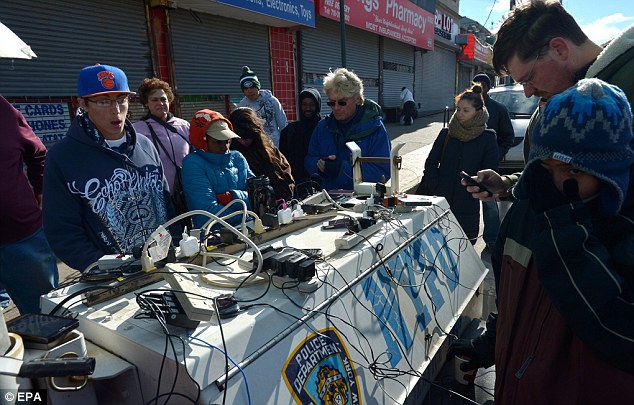
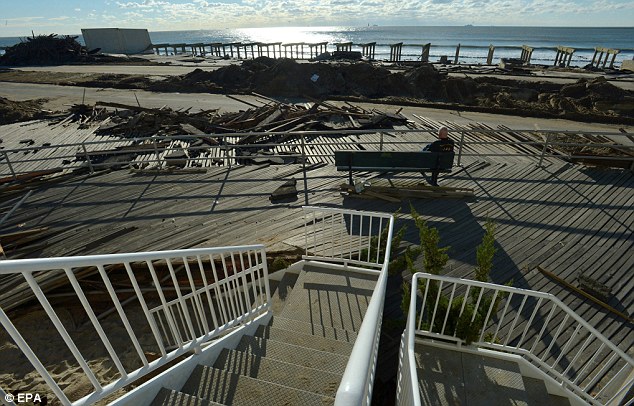
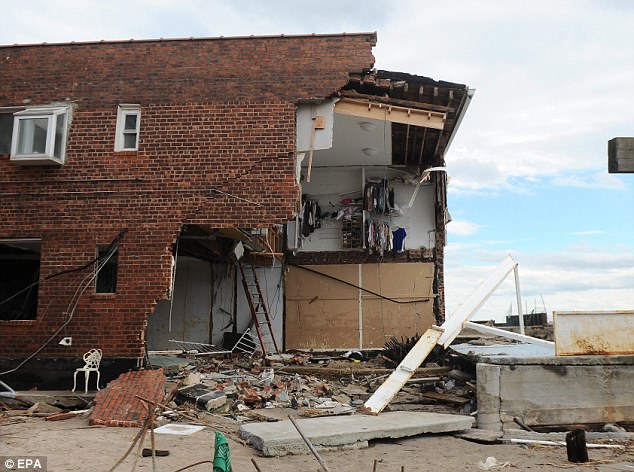



Reader Comments
to our Newsletter